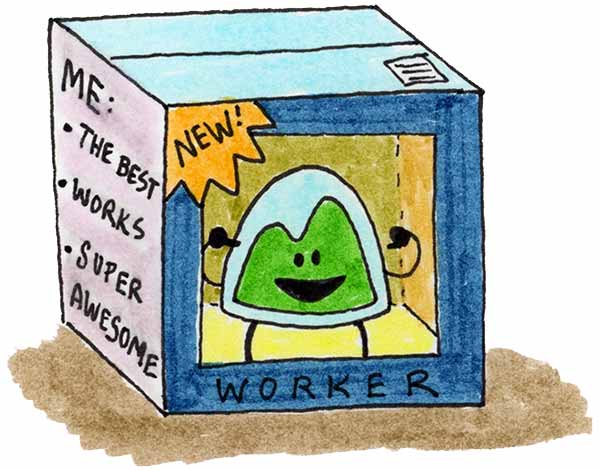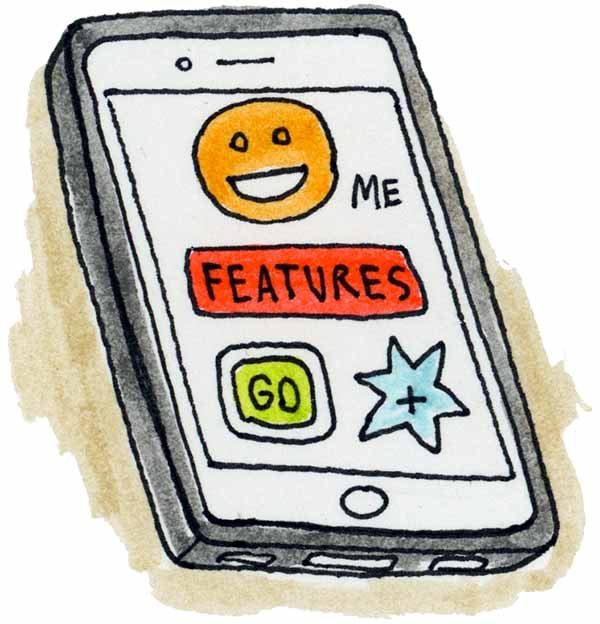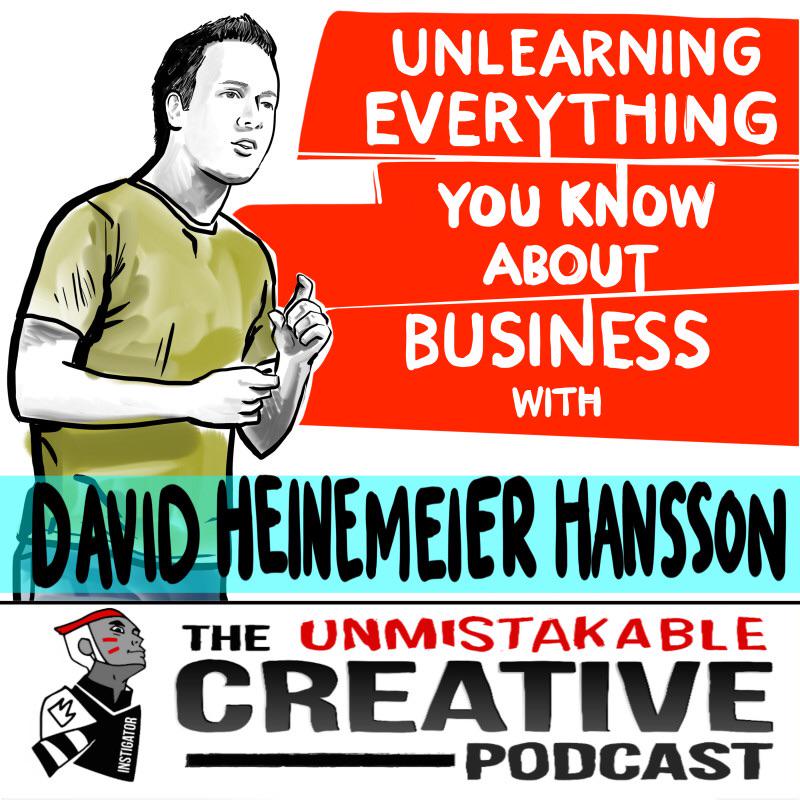The warehouse at Carma Labs in Franklin, Wisc. is filled with boxes of the 78-year-old company’s signature product, Carmex lip balm. But there’s something else going on in this concrete storage facility. Carma Labs President Paul Woelbing, the grandson of the company’s founder, is on year eight of a personal mission to construct a massive pipe organ at the warehouse that will be open to the community. Woelbing wants to spur interest in organ music among a new generation of listeners and players, building a musical legacy alongside his business one.
If you missed our previous episode about the history and staying power of Carmex, you can catch up on that story—and all our old episodes—at The Distance. At just 15 minutes apiece, our stories are great for binge-listening! And make sure to subscribe to our podcast so you catch new episodes as we release them.
Video: Ryan teaches product management at Mind the Product in San Francisco
“Finally—a chance to talk about product management to the right audience!”
That’s how I felt when Martin invited me to speak at Mind the Product in San Francisco. It was the right time and place, so I took the opportunity to distill years of blog posts and project experience into a condensed 30 minute talk. Now the video is online so those of you who weren’t at the conference can see it.
There are so many resources for programmers and designers to learn their craft, while those of us who guide products from conception to completion usually invent our own wheels. These are the tools I came up with to help teams focus on what matters and track the progress of a product over time. I hope watching the video gives you new ways to think about product management. Maybe it validates some of the things you were already doing and gives you new insights too.
Topics include:
- How to break the product into “orthogonal capabilities”—separate sections of work that you can track independently
- How to focus on what the product does instead of getting lost in the details of design and programming
- How to map out the capabilities and track progress over time
- How to bring meetings back to earth when people get lost in the clouds
and most importantly…
- How to sleep well at night because you have a clear view of where you are, what’s done and what’s left to do.
I recommend watching full screen in HD so you can see what I’m writing on the screen. You can see the slides at full size here: http://feltpresence.com/mtp.
Something's coming 4

Graceful goodbyes
Run a business long enough, and you’re bound to say goodbye to employees along the way. You might not think it matters how that goodbye is said – hey, they’re leaving anyway! – but you’d be wrong.
To be honest, we haven’t always had graceful goodbyes at Basecamp. To be even more honest, I’ve said goodbyes that weren’t graceful. And that still bugs me, and it serves as a recurrent reminder of why it matters.
A bad goodbye is abrupt and unexpected. It’s curt. And it’s like that because it’s easier to bottle up small frustrations, on both sides of the table, until they aren’t small at all anymore. By the time shit is spilling over everywhere, the time for small corrections has passed, and cutting ties can feel like the only option. A goodbye that sails through like a break-up text out of nowhere is the last thing you want, and it’s one of the worst ways to see an employee go.
Of course, not all goodbyes are bad. Far from it. People grow, people change. Like all relationships, not all roles are destined FOR LIFE.
In a relatively small company like ours, the career path at Basecamp is generally to become better at your craft. Level up within your domain of competency. Not to climb a managerial ladder, because there isn’t much of one.
We’ve also had people leave Basecamp to go build their own company or to change careers. Those are generally good goodbyes, because they’re the easiest to make. Wishing someone well for pursuing something you couldn’t offer them anyway shouldn’t take much skill (although I’ve been surprised).
But underlying all goodbyes is that they reflect not just on the relationship you maintain with the people who leave, but also with the ones who stay. They set a tone for how you treat people when things get rocky or take a different direction. It seeps into everything else. No goodbye is a single, isolated event.
Say goodbye with grace.
Something's coming 3

How much are we worth? I don't know and I don't care.
I was recently speaking to a class at a local university and the topic of valuations came up. One student asked me what our valuation was. I gave her the honest answer: I haven’t a clue.
How is it possible that a successful software company today doesn’t know its worth? A valuation is what other people think your business is worth. I’ve only ever been interested in what our company is worth to us.
Startups these days are bantered about as if they were in a fantasy football bracket. Did you hear Lyft raised another $150 million at a $2.5 billion valuation? But Uber got tossed another $2.8 billion at a $41.2 billion valuation! Then there are the companies barely off the ground getting VC backing with 25x valuations, despite having no product or business model.
Entrepreneurs by nature are competitive. But fundraising has become the sport in place of the nuts and bolts of building a sustainable business.
The last time I considered Basecamp’s valuation was nearly a decade ago. We’d been approached by dozens of VC firms looking to invest. But with a solid product, a growing consumer base, and increasing profitability, we didn’t entertain any offers.
Then, in 2006, I got an email from Jeff Bezos’s personal assistant. Jeff wanted to meet. I’d long admired him for what he was building at Amazon, and how he generally sees the world. I took the meeting.
After a visit to Seattle and a few more calls, Jeff bought a small piece of our company. I didn’t take the cash out of some fantastical desire to turn Basecamp into a rocket ship. Instead, his purchasing shares from me and my co-founder took a little risk off the table and gave us direct access to the brain of one of today’s greatest living entrepreneurs.
In the years since, we’ve been approached by nearly 100 private investors, VCs, and private equity firms. They want to put money into our company, but we don’t want it. It’s not hubris; it’s the cost that comes with the cash. I want to deliver a product that our customers want, not one that our investors want. I want to grow our company according to our timetable, not one dictated by a board. For many startups, funding has worked to their detriment—unnecessarily raised stakes, a path to unnaturally rapid growth. Venture capital is not free money.
Years ago, during the investment discussion with Jeff, we had to place a financial value on our company. The process of constructing a valuation was pretty silly, to be honest. We drew up charts, made some educated guesses, negotiated back and forth, and ultimately came up with a figure. We made it up, as everyone does. Let’s just admit it right now: Financial projections are big, fat guesses. They are best-case scenarios. Since they’re hypothetical, why not pull a number out of a hat?
Jeff knows this. All investors know this. Yes, you can look at revenue and profit and multiples, but so many tech company projections these days aren’t based on anything real. They’re based on fantasy. And too often, the more profit you have, the lower your valuation is. Because nothing pops the valuation bubble like reality.
My not knowing how much our company is worth doesn’t affect our business on a daily basis. I know our revenue and our profit. I know how fast we respond to customer service inquiries and how many people signed up for Basecamp last week. Those are real numbers to me. A valuation is an invented number that ebbs and flows on the basis of how much someone else thinks you’re worth. It’s nothing more than a distraction.
Want to see this in print? This article appears in the September 2015 issue of Inc. magazine.
Q: How do you seek out mentors/teachers?
I’m doing an AMA over at Designer News, and someone asked “How do seek out mentors/teachers?”
My answer:
I’ve never sought out mentors or teachers, because I think they are plentiful and all around us. The person who you think has all the answers probably has far fewer than you think.
I observe. When I walk into a small retail store, I observe how they do business. What’s working, what isn’t? How do they treat employees? Customers? Their merchandise? What can I learn from them at this moment?
When I get my hair cut I observe the salon. Who’s there? Why? If I had an appointment at 3:30, but it’s still 3:50 and I’m waiting, what’s that feel like? How does it feel to be on time and then have someone else who’s not on time? How does it feel to pay for something? To tip? When? How?
When I go to a restaurant I observe. How is the food presented. How does the server communicate? How’s the menu written? How’s the lighting? Is it sufficient to read the menu? Do I have to ask twice for things, or do things just show up on time before I have to ask? What happens if I have a substitution request – how do they handle that? Is it a burden for them or a pleasure to serve? Are they pushy or comfortable? How do I feel about being there?
Every moment is a teaching moment. You don’t have to wait to be taught anything. Don’t delay learning because you haven’t found that magic teacher yet. Everyone, and everything, is a teacher.
What’s the biggest feature you’re missing in Basecamp?
Do you want to assign a task to more than one person? How about folders or real-time chat? If there’s something missing for you in Basecamp, I’d like to hear about it.
We’ve set up a page to collect feature requests and maybe I’ll use your answer in future marketing videos. Head over to basecamp.com/feature-request and let me know what that one feature is that would make your life way better.
You’re a product and your job application is a user interface
Once or twice a year I find myself on the receiving end of job applications. That’s the case today as we consider candidates for our open position on Basecamp’s mobile team. Having reviewed over 100 applications so far I’ve seen a wide variety of approaches. It occurred to me that the best applications are a lot like great products.
 The best products are easy and enjoyable to use, they make us feel successful. Similarly, the best job applications make it easy for someone to hire you. In a moment I can tell you read the job posting carefully, you included all the relevant information, you’ve done your homework (you know something about the company and its products), you actually want the job (do not play hard-to-get!), and you’re nice.
The best products are easy and enjoyable to use, they make us feel successful. Similarly, the best job applications make it easy for someone to hire you. In a moment I can tell you read the job posting carefully, you included all the relevant information, you’ve done your homework (you know something about the company and its products), you actually want the job (do not play hard-to-get!), and you’re nice.
There is a real person on the other end of your job application responsible for making a decision. They’re worried about making a bad choice; one that could embarrass them in front of their boss and coworkers; one that could cost them money, their job, or even their company! They want to feel good about hiring you and they want it to be easy.
Think of your job application as the user interface for you, the product, as you consider these suggestions:
Good software does work for you
 Many job application emails are simply an invitation to visit the candidate’s website to “learn all about me”. I have no doubt that those sites contain everything I need to know including links to Github repos and fulfill all the requirements laid out in the job post but don’t leave it to the hiring manager to sift out the good stuff. Why trust that they’ll pull out the best bits anyway? Surface your highlight reel right in the email. If all you had was a thirty second elevator conversation in which to tell someone why they should consider you for the job, what would you say? Write that.
Many job application emails are simply an invitation to visit the candidate’s website to “learn all about me”. I have no doubt that those sites contain everything I need to know including links to Github repos and fulfill all the requirements laid out in the job post but don’t leave it to the hiring manager to sift out the good stuff. Why trust that they’ll pull out the best bits anyway? Surface your highlight reel right in the email. If all you had was a thirty second elevator conversation in which to tell someone why they should consider you for the job, what would you say? Write that.
Avoid feature bloat
You may have 20 years of experience, know 30 programming languages, have shipped 40 apps, and pushed 1000 commits to OSS projects but as the user of your job application I only need a few of these “features”. No one gets hired for being comprehensive. If you have so much experience and can do all of these different things—great!—you can apply to many different jobs, but for each one, trim down to the skills and experience that matter most. Be a curator.
Of course, if you’re applying for a job at a Fortune 500 company where you know your résumé is going to be sucked into a database only to be retrieved by some keyword matching algorithm, then by all means detail every job, every language, every piece of software—pack it full of keywords. Just don’t use that same application when applying to the founder with a team of five.
Get the message right
 You wouldn’t wear a suit to interview with a Silicon Valley start-up (unless it was totally ironic, right?) so why would you send them a dry, boring resume and cover letter from a template you Googled? If you’re applying for a job that requires you to be creative and inventive, why not be creative and inventive? Take an approach they’ve never seen before. Imagine everyone who applies for the same job is completely qualified—what makes you the right person for the job? Chances are it’s something that isn’t even on your résumé. It’s your personality or your effort. Sometimes it’s as simple as being clear that you’re not not seeking a job but this job.
You wouldn’t wear a suit to interview with a Silicon Valley start-up (unless it was totally ironic, right?) so why would you send them a dry, boring resume and cover letter from a template you Googled? If you’re applying for a job that requires you to be creative and inventive, why not be creative and inventive? Take an approach they’ve never seen before. Imagine everyone who applies for the same job is completely qualified—what makes you the right person for the job? Chances are it’s something that isn’t even on your résumé. It’s your personality or your effort. Sometimes it’s as simple as being clear that you’re not not seeking a job but this job.
Nobody likes spam
If your job application consists of a one-line email with a résumé attached you’d better send out a ton of them because you can probably count on the same return rate as the Cheap Meds guys. If it looks like you spent 15 seconds applying for the job why would you expect the person hiring to spend any more time reading your application? What if you were delivering your résumé in person? What would you say? Again, write that.
Wait! You’re just being lazy!
You might be tempted to refute these observations by simply calling me lazy (it might even be fair). The point here isn’t to demand, “these are the things you must do to get hired” but to make clear that some people are already doing them. They’re the ones who make hiring them a no-brainer.
That’s who you’re up against.







